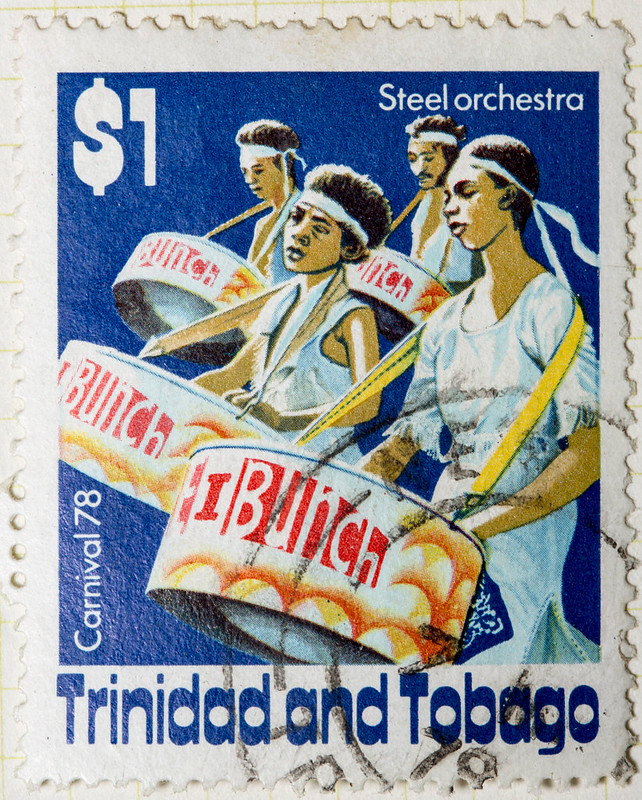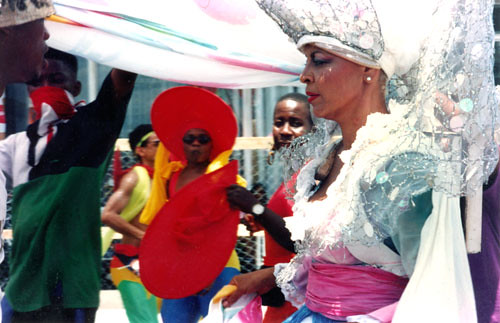Carnival is a celebration, a time when the Soca is blasting, the waistline is peltin’, and people from all walks of life can get together to dance and express joy. Not only is it a time of celebration, but it is also a form of resistance.

Photo Credits: Flickr Commons
Carnival in Trinidad & Tobago originated in the late-eighteenth century and was born out of resistance. French planters, slaves, and freed people of color from neighboring islands immigrated to Trinidad following the Spanish Cedula of Population Edict of 1783. Shortly after immigration, the French settlers, and freed people of color alike held annual masquerade balls. The slaves, who were excluded from the masquerades decided to enact their own form of Carnival in the slave quarters where they were allowed a modicum of freedom. Their merriments came to be known as ‘Canboulay’ or ‘Cannes Bruleés’ since they were held at the same time as the burning and harvesting period for sugar cane.
Although the celebrations would culminate in dancing and singing, the significance of ‘Canboulay’ is in its mockery of oppressors. Instances of mockery primarily embodied an exaggerated iteration of French sentiments. Memorable characters like ‘Dame Lorraine’ would often mimic the formal dress of the French women by exaggerated padding in the chest or wildly elaborate hats and fans. These subtle methods of mockery gradually transcended a spirit of union, retaliation, and resistance into a unique form of expressional identity for the slaves.
The timing of Canboulay is important with regards to the molding of this form of identity expression because it was held right before Lent, which is a period one would abstain from any festivities and rich foods such as meat, alcohol, and fats. Thus, carnival was a way to make up for the coming period of austerity, whereby one would be free to express themselves how they want. The anonymity provided by masks, costumes, and crowds enabled participants to be as carefree as they wanted.
Music plays a key role in molding the carnival experience. Calypso music was used not only to mock the slave masters but as a way to covertly communicate between the slaves. The calypso rhythm distinctively harmonizes West African Kaiso music with French Creole lyrics. This eventually evolved into Soca music, which is the main music genre played at modern carnival sites.
Canboulay became even more important as a symbol of freedom and defiance after the official emancipation of slaves in 1838. The celebrations became more daring and louder but were met with hostility from the British colonial government. The government tried to stifle it by outlawing all forms of drumming, singing in public, masquerading, stick fighting, and the practice of all African based religions. As is the nature of carnival, though, when met with resistance, alternative methods were found. The freed slaves did not let the bans stop them and switched to using bamboo sticks. When bamboo sticks were banned they then switched to using small biscuit tins. In the process, the steelpan emerged, which is an instrument still used in carnival today.
Carnival symbolized defiance and liberation but also a holistic Caribbean identity. Trinidad is a melting pot of various ethnic groups who fundamentally influenced Carnival & Trinidadian Culture as we know it today. An example of this is Chutney Soca, which is a version of Soca created by Indian Trinidadians and is heavily based on Indian music styles.
Carnival, like any celebration, has evolved over time. Traditional Canboulay costumes called ‘Ole mas’ are not as popular, while ‘Pretty mas” costumes which are more similar to the costumes worn in the Brazillian Carnival are much more popular. That being said, the spirit of Carnival is still alive. Calypso is still played, stick fights take place, traditional costumes are still worn and most importantly the notion of Carnival being a time of celebration, and freedom are still intact.

Photo Credit: Flickr Commons
Carnival is celebrated in other Caribbean nations such as Jamaica, Haiti, Cuba, St. Lucia, Martinique, Guadeloupe, Dominica, Puerto Rico, and the Dominican Republic. Carnival is also widely popular outside of the Caribbean as the Caribbean Diaspora continue to celebrate. The Notting Hill Carnival in London, which started in the ’60s and came from a need to create community and celebrate West Indian culture, is an example of this. The event came after the Notting Hill race riots when hundreds of young white men threw homemade bombs at Black residents’ homes, most of whom were West Indian. As such, the Carnival emerged as a way to openly celebrate West Indian culture in defiance of the attacks.
https://www.youtube.com/watch?v=Gp4aEkPN9Iw
Celebrating Carnival remains a large part of the Caribbean identity. Carnival is welcoming to all, and at its core is about resistance in the form of joy, and reclaiming spaces. Carnival is a tradition that has survived through hardship, sacrifice, and defiance and will continue to be an important fixture in Caribbean identity and culture.
Powered by WPeMatico


